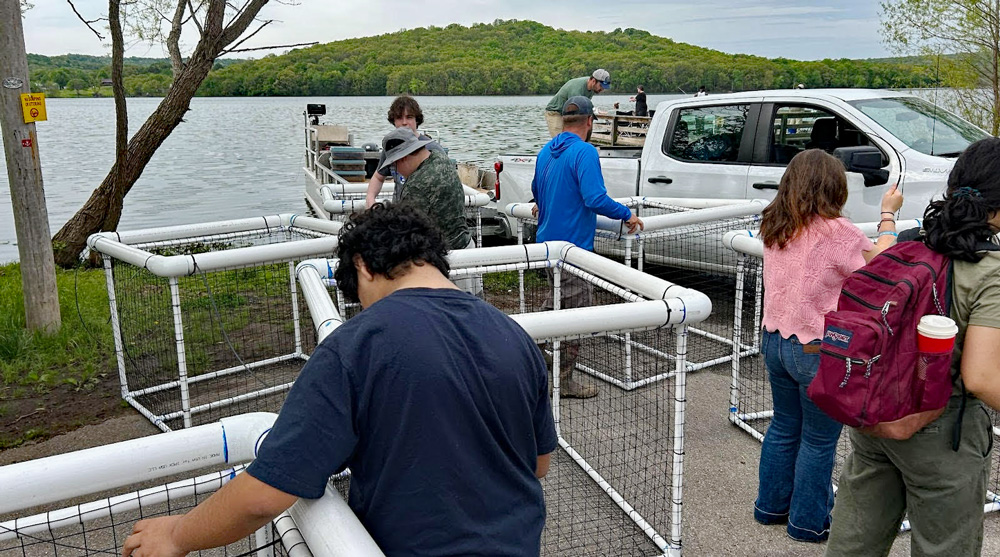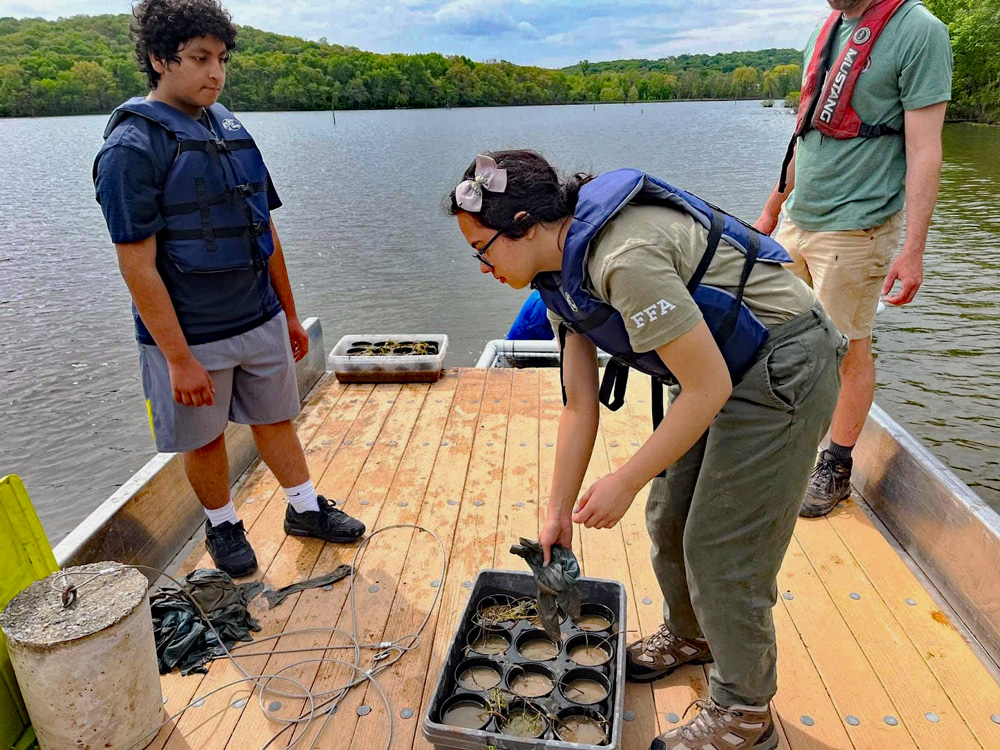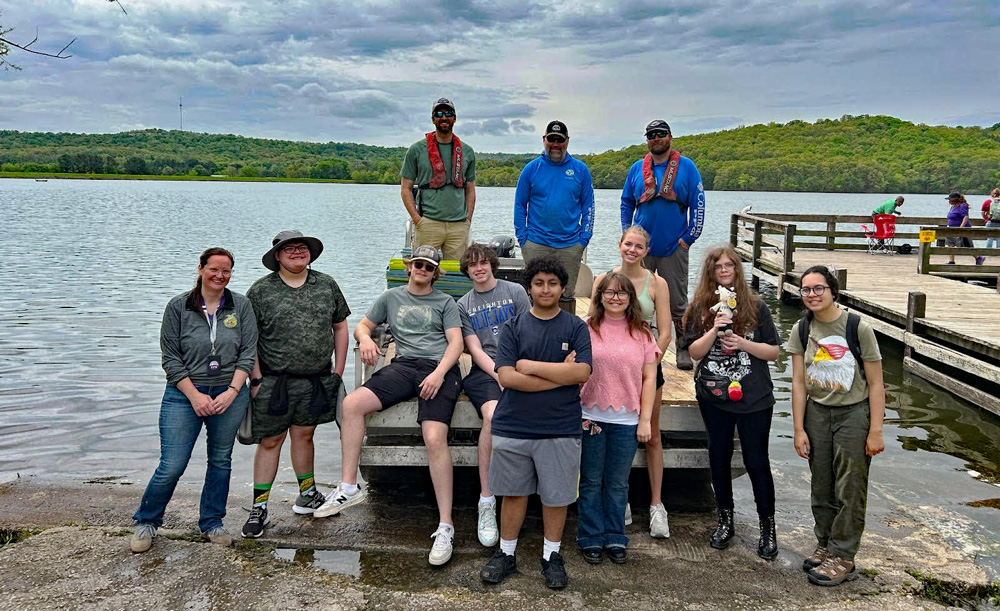PRAIRIE GROVE, Ark. — Students from seven Northwest Arkansas schools have partnered with the Arkansas Game and Fish Commission (AGFC) and the Northwest Arkansas Fish Habitat Alliance to restore native aquatic vegetation at Bob Kidd Lake, aiming to improve water quality and fish habitats.
Student Engagement in Environmental Restoration
Participants from Har-Ber High School in Springdale and six Fayetteville schools—John L. Colbert Middle School, Owl Creek Elementary, Vandergriff Elementary, Happy Hollow Elementary, Fayetteville High School, and the ALLPS School of Innovation—cultivated approximately 1,000 pots of American pondweed and 50 delta arrowhead plants in their school greenhouses.
“The program has made excellent use of four pre-existing greenhouses on school property,” said Justin Keen, Outdoor Education and Sustainability Specialist for the Fayetteville School District.
Students not only planted the vegetation but also monitored growth, introducing native mosquitofish to control mosquito larvae and observe ecological interactions.

Collaborative Efforts Enhance Lake Ecosystem
In April, students collaborated with AGFC staff and the Fish Habitat Alliance to transplant the cultivated plants into floating nursery cages, known as “Arkansas cubes,” at Bob Kidd Lake.
These cubes float on the water’s surface and are anchored to stationary posts, allowing plants to grow while being protected from aquatic herbivores like turtles.

Community Support and Educational Impact
Local businesses contributed to the initiative, with ChemStation donating large tanks and Terra Studios providing additional support.
Keen highlighted the educational value of the project, noting that it expanded students’ understanding of greenhouse applications beyond traditional uses like pollinator gardens.
“They’ve been used over the years for things like pollinator gardens, but this has opened students’ eyes to another aspect of their use,” he said.
This conservation project exemplifies the integration of environmental education and community involvement, fostering a sense of stewardship among students while contributing to the ecological health of Bob Kidd Lake.

All photos for this article are courtesy of the Arkansas Game and Fish Commission (AGFC)
This article was originally published on ArkansasOutside.com, your trusted source for outdoor news and updates in The Natural State. Unless otherwise credited, all photos included in this piece are the property of Arkansas Outside, LLC. We take pride in sharing the beauty and adventures of Arkansas through our lens—thank you for supporting our work!






